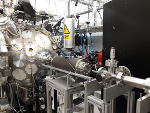| | 13 | Photoacoustic (PA) imaging is a new biomedical imaging modality based on the use of laser-generated ultrasound that has emerged over the last decade. It is a hybrid technique that combines the high contrast and spectroscopic-based specificity of optical imaging with the high spatial resolution available to ultrasound. In essence, a PA image can be regarded as an ultrasound image in which the contrast depends on optical absorption. As a consequence, it offers greater specificity than ultrasound with the ability to detect haemoglobin, lipids, water and other light-absorbing molecules, but with higher penetration depth than purely optical imaging modalities such as multiphoton microscopy that rely on ballistic photons. As well as visualising anatomical structures such as the microvasculature, it can also provide physiological information in the form of blood oxygenation, blood flow and temperature. All of this can be achieved over a range of length scales from microns to centimetres with scalable spatial resolution. These attributes lend PA imaging to a wide range of applications in clinical medicine, preclinical research and biology for studying cancer, cardiovascular disease, abnormalities of the microcirculation and other conditions. A high resolution small animal imaging system based on a novel interferometric ultrasound sensor has been developed. This has been used to obtain detailed non invasive 3D images of tumour vasculature, mouse embryos and tumour cell distribution using genetically expressed reporters. The same technology has been further developed to realise a range of non invasive and endoscopic clinical imaging devices for the assessment of cancer, cardiovascular disease and microcirculatory abnormalities. |
